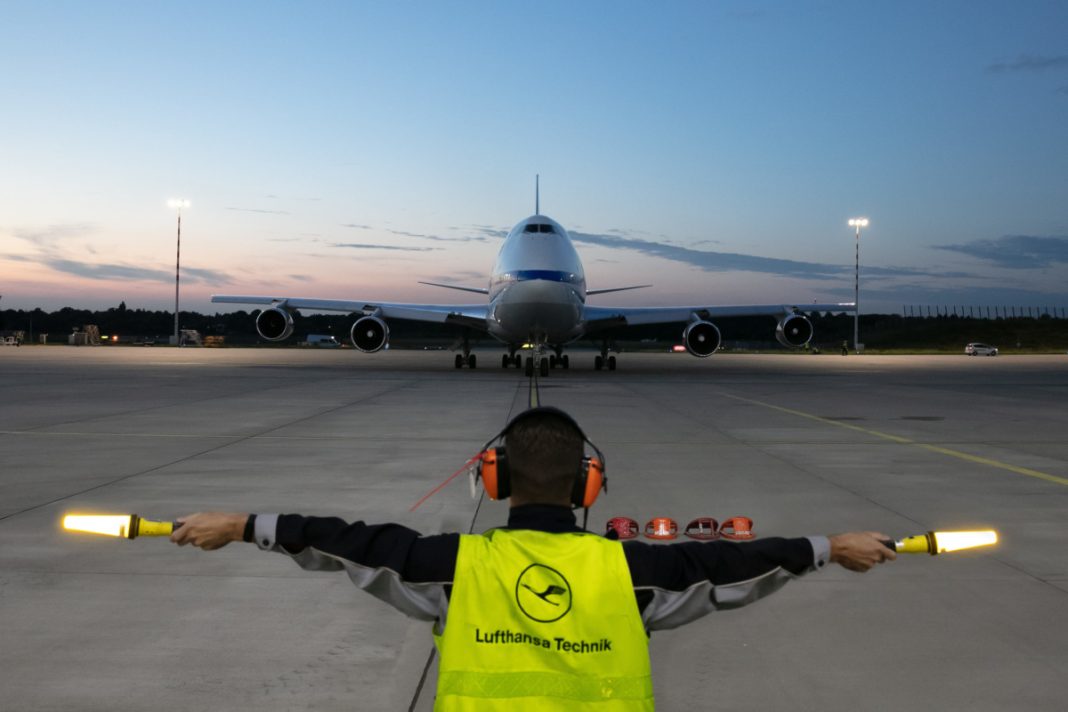Yesterday, Lufthansa Technik welcomed NASA’s 747, the SOFIA. On her third visit, the aircraft will remain under the care of the German maintenance provider for five months before she resumes her scientific mission. Let’s take a look at what will happen while she is in Hamburg.

On Wednesday evening NASA’s Boeing 747SP, the Stratospheric Observatory for Infrared Astronomy – SOFIA, arrived in Hamburg. There, Lufthansa Technik will put the aircraft through her paces. The unique jumbo is to undergo the equivalent of a C-check, which is done approximately every three years. The last time she stopped by was in 2017.
Of course, this is no ordinary plane, and it is NASA after all, and maintenance is bound to look a little different from your standard aircraft check-up. So how exactly is the Hamburg-based maintenance provider looking after SOFIA?
Stay informed: Sign up for our daily aviation news digest.
NASA special regulations
In the case of SOFIA, a joint project between NASA and the German Aerospace Center (DLR), everything must be carried out in accordance with NASA regulations. These also dictate what exact works happen during this prolonged pit stop.
First, the crew performs extensive inspections of the aircraft’s structure, determining what repairs will be needed. Then, they remove the engines and cabin – including the paneling and the floors – to perform tests and maintenance and to check all the cables and ducts.

Air conditioning upgrade
Specifically, on this occasion, Lufthansa Technik will upgrade the SOFIA’s air conditioning system. Heinz Hammes, SOFIA Project Manager at DLR’s Space Administration branch, explained why in a statement seen by Simple Flying.
“This will enable us to adjust the temperature in the cabin very finely in the future. This is particularly important in the instrument zone, because every research instrument requires a precisely fitting ambient temperature.”
Welcome back to Hamburg, @SOFIAtelescope! For the third time this special guest is visiting us for an extended maintenance event. Thanks for your continued trust @DLR_en, @SOFIA_DSI, and @NASA! More information tomorrow! #keepyouflying #mroexperts # pic.twitter.com/MfFLfr7fgc
— Lufthansa Technik (@LHTechnik) September 30, 2020
Over 10,000 working hours
While an ordinary C-check under normal circumstances may take a passenger jet out of service for a couple of weeks, the aircraft will remain in Hamburg until the beginning of February. Lufthansa Technik has scheduled the final checks, including those on the engines and the cabin’s internal pressurization, for mid-December.
Due to precaution measures arising from the present circumstances, no more than 15 people may be on board the aircraft simultaneously. This prolongs the visit, which is SOFIA’s third in Hamburg, as 10,000 working hours are already earmarked for the scheduled maintenance work alone. However, there are also other parties and other elements involved.

Mirror inspections and software updates
The German SOFIA Institute (DSI) at the University of Stuttgart will be giving the reflecting telescope the 747SP carries a thorough overhaul. Michael Hütwohl from
DSI, who is responsible for the telescope, commented,
“With this extensive maintenance, we pay particular attention to those work packages that, due to their complexity, are only carried out every three or six years. Moreover, a large number of smaller jobs, from the inspection of the 2.7-meter primary mirror to software updates of the electronic telescope systems, are also on the agenda.”
One difference from previous visits is that the SOFIA’s scientific instrument – the German Receiver for Astronomy at Terahertz Frequencies (GREAT) is now mounted on the actual telescope itself. It was disassembled after landing and brought to the Max Planck Institute for Radio Astronomy in Bonn for maintenance.
Are you keeping up with NASA’s research? What do you find most intriguing about astronomy and the technology behind the SOFIA? Let us know in the comments.
[ad_2]
Source link


